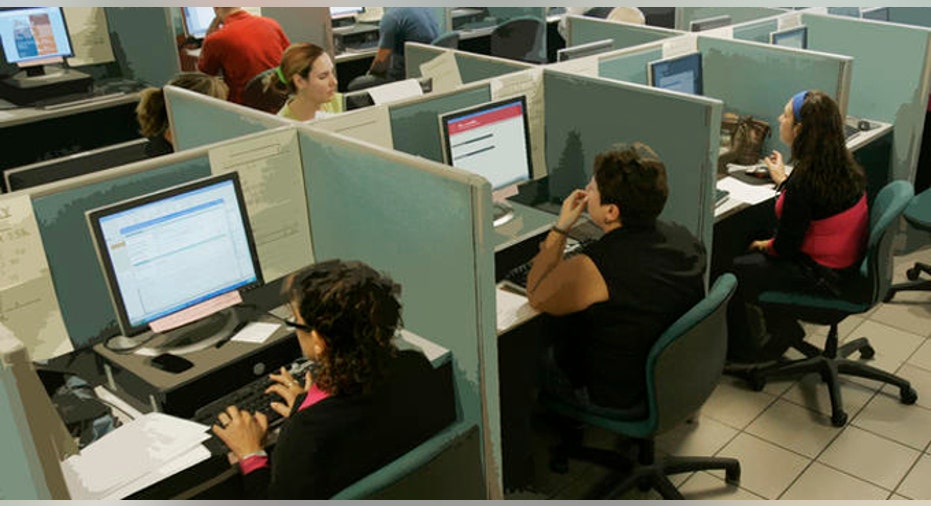Five Headaches You Can Help Your System Admin Avoid

Whether installing, patching, troubleshooting, fixing, protecting, configuring or securing, today's system administrator (aka sysadmin) is the jack of all trades who saves the day, every day. So it seems fitting that for the past 12 years, the last Friday in July has been set aside to honor these unsung heroes charged with keeping today's businesses up and running.
This year, System Administrator Appreciation Day falls on July 27. Rather than simply celebrating their heroism, a better reward might be to help anticipate their most common challenges, and ensure they have the time and resources available to minimize their stress.
The five categories listed in this article — natural disasters, facilities disasters, hardware failures, software upgrades and user errors — represent the typical sysadmin headaches. But with a bit of forethought and, in some cases, an ounce of prevention, the impact of these headaches will be nothing more than a blip on the radar.
No. 1: Natural Disasters
Although (fortunately) relatively uncommon, natural disasters have a knack for surprise attacks that can bring an organization down for days, weeks, months or for good. In fact, according to research from DTI and PricewaterhouseCoopers, 70 percent of small companies go under within six months of a major data loss, making the stakes very high, indeed. Yet even with a disaster recovery plan in place, many organizations still find they didn't anticipate the disaster's magnitude or velocity.
Take, for example, the catastrophic floods in the wake of last year's Hurricane Irene. Vermont was infamously hit hard. One of the state's critical data centers was flooded, damaging servers, arrays and more.
"We were not expecting six feet of water," said Vermont state CISO Kris Rowley. Luckily, the state backed up its data at a remote site the night before the floods hit. Certainly, initiating a backup, recovery and continuity solution for instant recovery of data, applications and systems in the event of disaster is of paramount importance for any organization.
No. 2: Facilities Disasters
It's true that many small to mid-size businesses share a multitenant building with a number of other organizations. While this may have the benefit of lower overall facilities costs, it also opens a cache of possibilities for disaster. The top concern is often fire, but in reality, plumbing problems are probably more common.
Overflowed toilets, burst pipes and the like have the potential to destroy servers, of course. But short of monitoring the common bathrooms for misuse of the facilities, there's little that can be done to prevent plumbing problems. However, ensuring your organization has backup servers offsite will help ease the pain here.
No. 3: Hardware Failures
Much more common than natural or facilities disasters, hardware failures likely consume a larger percentage of a sysadmin's troubleshooting tasks. Sometimes, however, the smallest change in routine can stave off major problems. Take, for example, today's multicore processors, which use fans on heat sinks to keep from running too hot. As these fans and heat sinks accumulate dust, they become less effective at dissipating heat, ultimately causing hardware failure. A blast of air from a $5 can of compressed air will remedy the dust issue immediately. It's an easy fix overlooked by most.
No. 4: Software Upgrades
Issues with software upgrades present another common headache. Most computer users have at one time or another run into problems after updating Windows, for example. These types of issues can be circumvented by applying patches to a non-production version of software. By nature, software problems are tricky to figure out, especially while you're trying to run everything. Having an alternative approach while you determine how to fix any issue is key.
No. 5: User Errors
Behold the user error — the bane of existence for sysadmins everywhere. Forgotten passwords, users who mess with the wires or who don't make note of error messages — these all contribute to a sysadmin's rising stress level. Often, the fix is as easy as turning off "Caps Lock" or plugging in a mouse. Other times, as is the case with the new BYOD ("bring your own device") trend, the fix is much more complicated.
Increasingly, employees are bringing personal devices to work to access privileged company resources such as email, file servers and databases, as well as their personal applications and data. Because these devices are not work-issued and sysadmins do not control them, they introduce a whole new set of complications that may affect an organization's systems. Troubleshooting could be a major problem also, for example, if an employee brings a laptop that uses OS X when all other employees and IT personnel use Linux.
Some of the aforementioned issues can be avoided (or their impact lessened) with a disaster recovery or business continuity plan that includes a solution with appliance and cloud components, as well as the ability to test your plan on demand and automatically.
Indeed, long hours and frustrating obstacles characterize many a sysadmin's daily routine. We recognize your heroics, we appreciate your patience and we acknowledge your value. Hopefully, by anticipating some common crises, and making sure the resources are at hand in the event they are needed, the sysadmin's job will be less stressful and more fulfilling. In the meantime, sysadmin, here's to you. Happy System Administrator Appreciation Day!
This opinion column was written by Larry Lang, CEO of Quorum![]() , which provides one-click backup, recovery and continuity services, helping businesses safeguard their revenue, customers and reputation.
, which provides one-click backup, recovery and continuity services, helping businesses safeguard their revenue, customers and reputation.



















